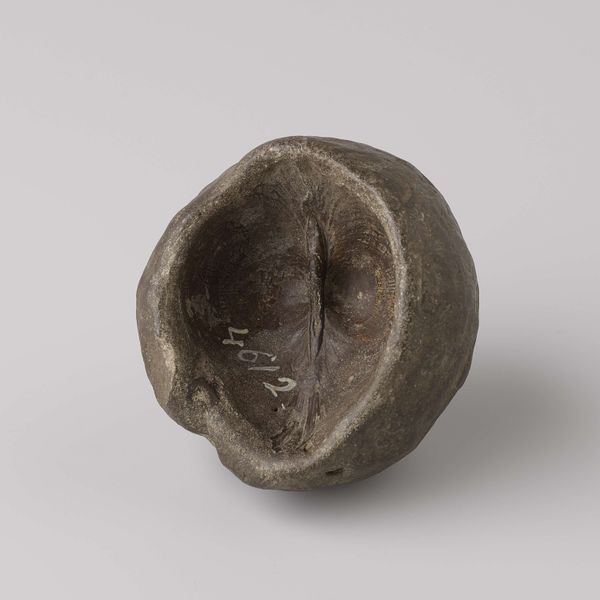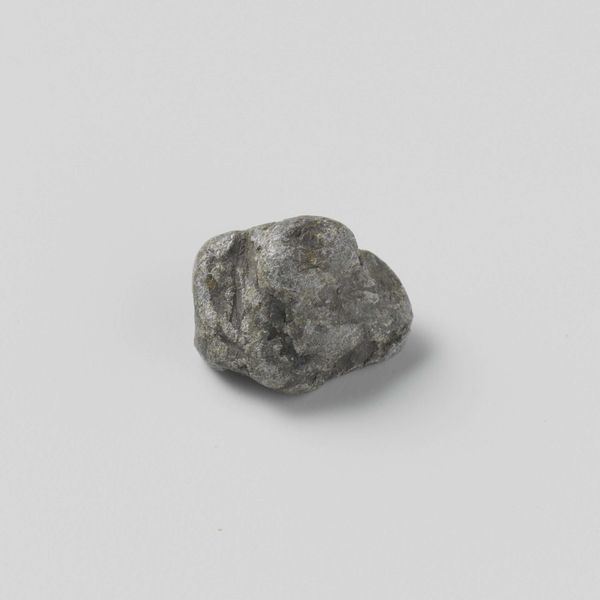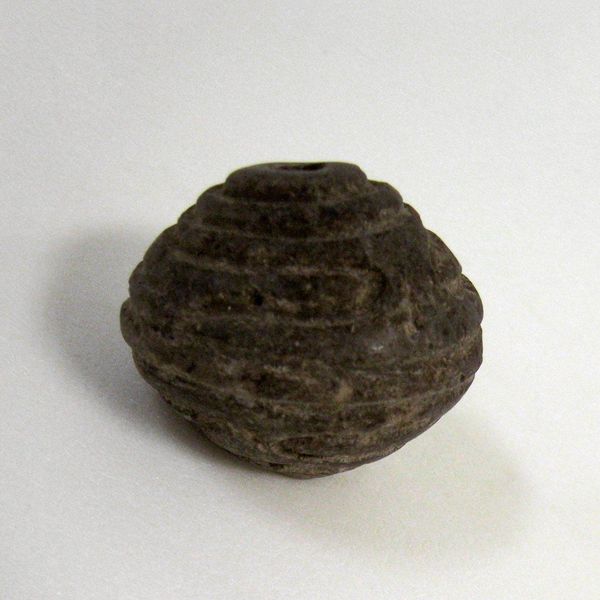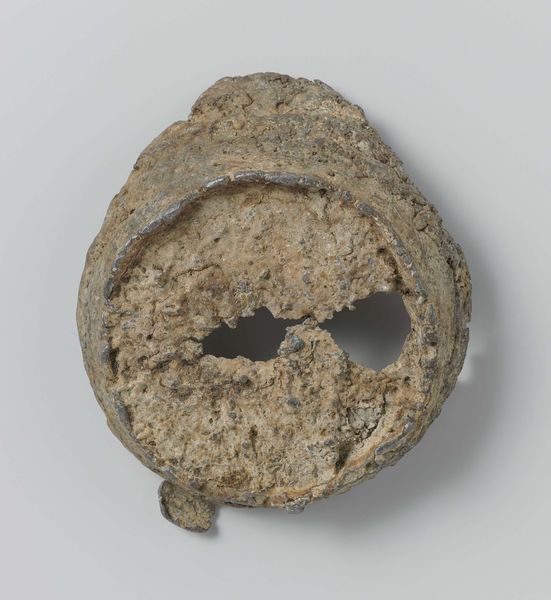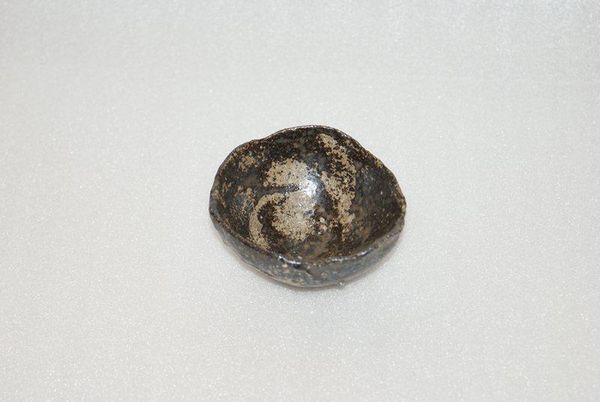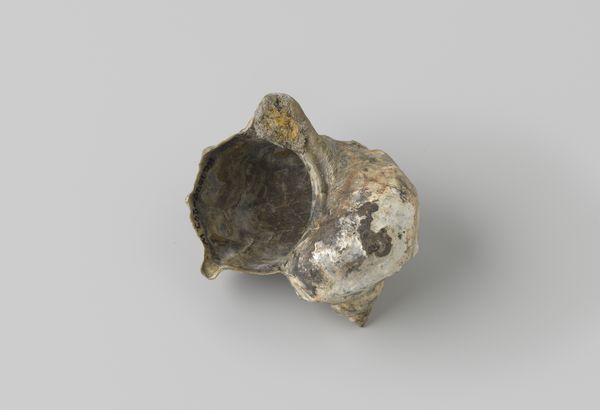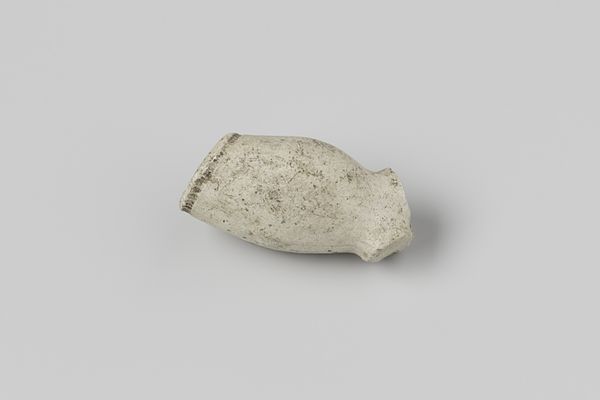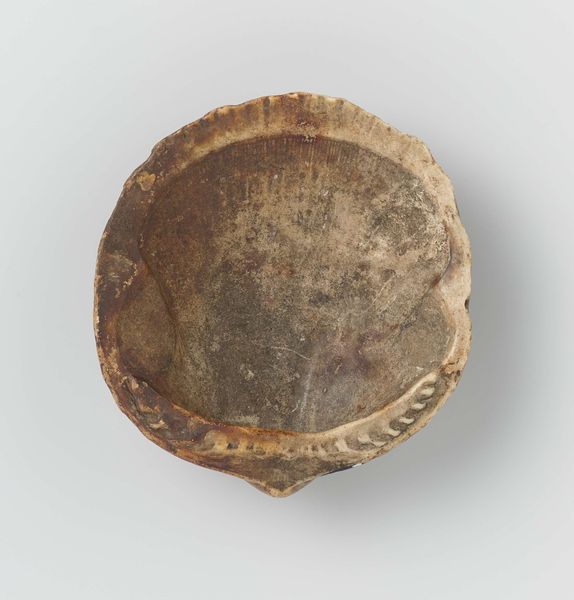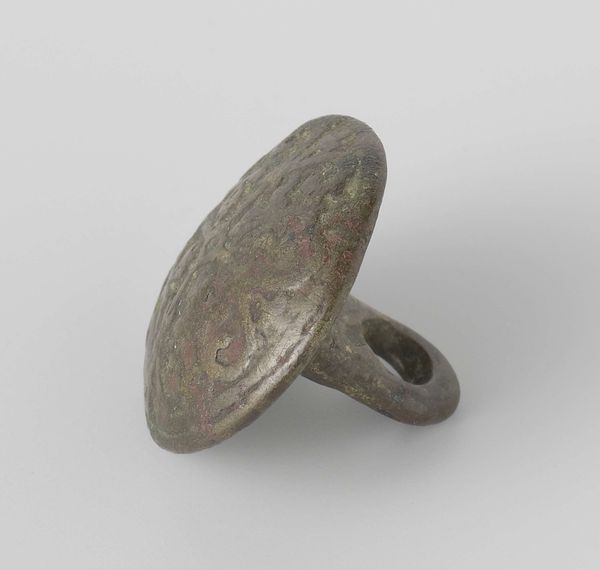
ceramic, sculpture
#
medieval
#
ceramic
#
form
#
stoneware
#
sculpture
Dimensions: height 1.2 cm, diameter 1.2 cm
Copyright: Rijks Museum: Open Domain
Editor: We're looking at an anonymous stoneware piece from around 1590-1596 at the Rijksmuseum, called "Knoop, rond afgeplat met decoratief patroon", or "Button, Round Flattened with Decorative Pattern." It looks a little rough around the edges, like a handmade object. How should we approach the viewing of such an ordinary, useful, and anonymous item? Curator: Let’s start with its materiality. Stoneware itself tells a story. Consider the labour involved in extracting the clay, preparing it, the firing process – a whole chain of production is embedded in this humble button. Do you notice the subtle patterns on its surface? Editor: Yes, I do. They seem almost accidental, or perhaps created with a very simple tool. Is there any way of knowing more about its fabrication? Curator: The roughness, the apparent simplicity of the decoration, suggests it wasn’t intended for the elite. This was likely mass-produced for common clothing. This reveals something vital about daily life at the time. Editor: So, this simple object provides insight into broader consumption and labour practices in the 16th century. I would have missed that by merely focusing on aesthetics. Does the form suggest anything to you about it? Curator: Consider how easily something like this could be replicated by other craftspeople in various regions at the time. This stoneware button connects directly to broader economic realities and material constraints. We can study these qualities to look at larger distribution. Editor: I guess analyzing something so simple can still lead to very profound ideas about economics, fabrication and culture! Curator: Precisely! Everyday objects are just as critical to understanding history as grand paintings or sculptures.
Comments
No comments
Be the first to comment and join the conversation on the ultimate creative platform.




